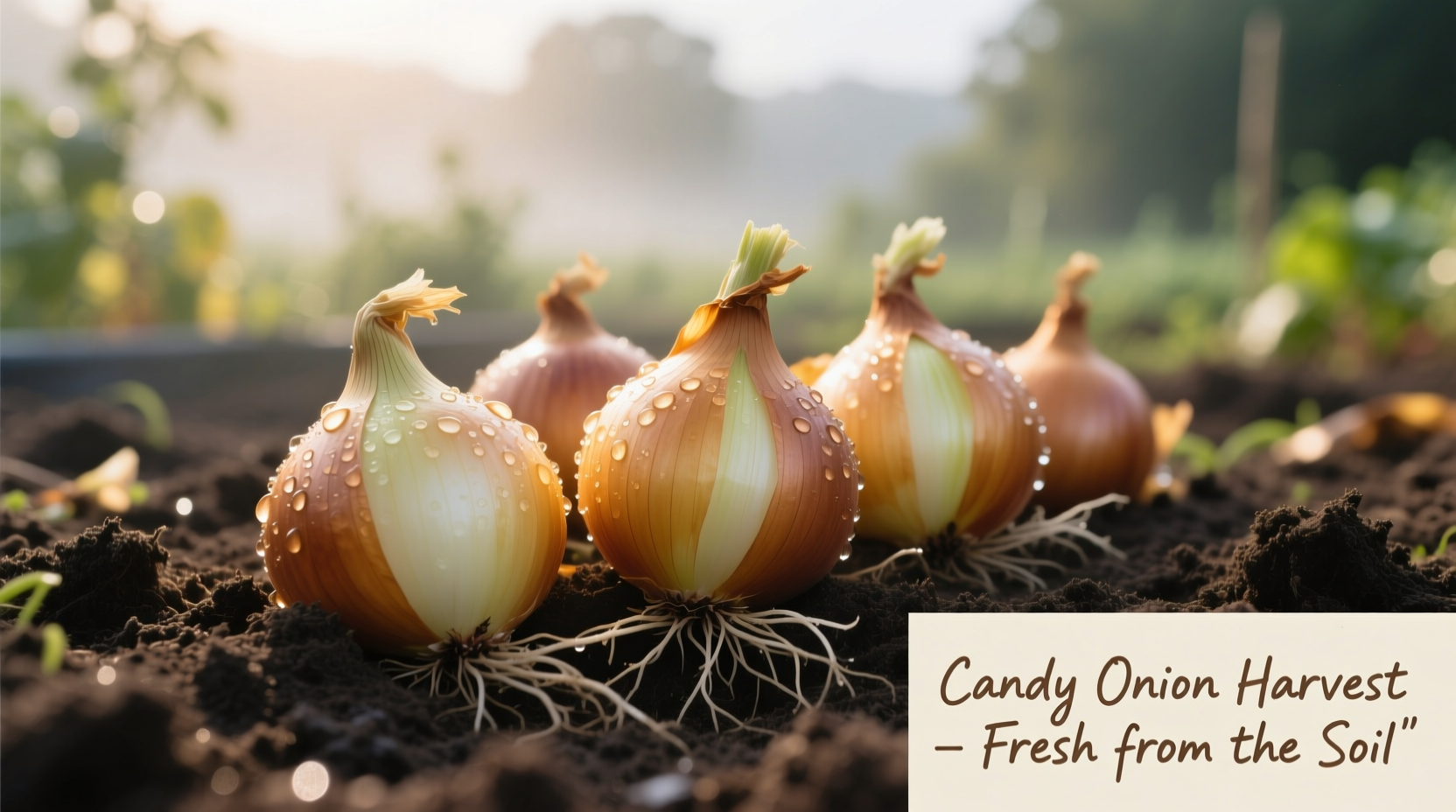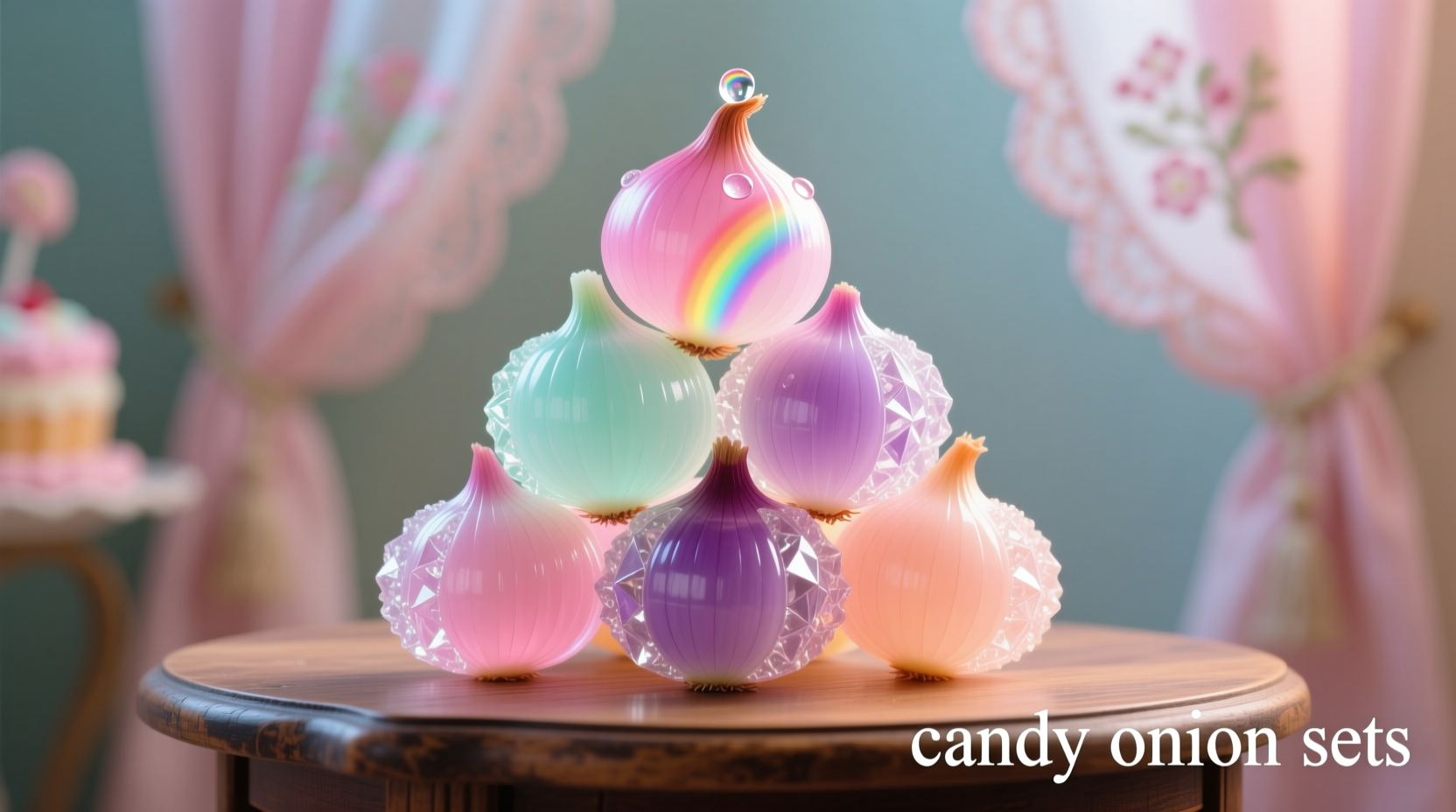Discover exactly how to grow these delectable sweet onions with our comprehensive guide. Whether you're a first-time gardener or seasoned grower, you'll learn the precise planting techniques, soil requirements, and harvesting methods that guarantee plump, flavorful candy onions every season. We've distilled decades of horticultural expertise into this actionable roadmap for sweet onion success.
Understanding Candy Onion Sets: Your Sweet Onion Foundation
Candy onion sets represent one of the easiest methods for growing sweet onions. These small, dormant bulbs (Allium cepa) have been specially cultivated for their low pyruvate content, which translates to minimal pungency and maximum sweetness. Unlike starting from seeds, sets give you a 4-6 week head start on the growing season, crucial for short-season gardeners.
Commercial growers developed candy onion varieties like Texas Sweet and Walla Walla through selective breeding to thrive in specific day-length conditions. These short-day onions require 10-12 hours of daylight to initiate bulb formation, making them ideal for southern climates but adaptable to northern regions with proper timing.
| Onion Type | Pyruvate Level | Storage Life | Best Growing Zones |
|---|---|---|---|
| Candy/Sweet Onions | 0.05-0.10 μmol/g | 4-8 weeks | 5-9 (with proper timing) |
| Yellow Storage Onions | 0.20-0.30 μmol/g | 6-8 months | 3-10 |
| Red Onions | 0.15-0.25 μmol/g | 2-4 months | 4-9 |
This comparison shows why candy onions deliver that signature mild flavor perfect for fresh salsas and salads, but require more careful storage than their pungent counterparts. The data comes from the Oregon State University Extension Service, which has conducted extensive research on onion varieties.
Optimal Planting Timeline for Maximum Sweetness

Timing your candy onion set planting correctly determines your harvest's sweetness and size. These onions follow a precise biological clock based on day length:
| USDA Zone | Best Planting Window | Expected Harvest | Critical Day Length |
|---|---|---|---|
| 3-4 | April 15-May 1 | July 20-August 5 | 14+ hours |
| 5-6 | March 25-April 10 | July 1-15 | 12-14 hours |
| 7-8 | February 15-March 1 | June 10-25 | 10-12 hours |
| 9-10 | October 15-November 1 | April 15-May 1 | 10-12 hours |
This planting schedule, verified by University of Minnesota Extension, ensures your candy onions experience the precise day length needed for optimal bulb development. Plant too early in cold soil and sets may bolt; plant too late and they won't size up properly before summer heat.
Soil Preparation: Creating the Perfect Sweet Onion Environment
Candy onions demand specific soil conditions to develop their characteristic sweetness:
- pH Balance: Maintain soil between 6.0-6.8 (slightly acidic to neutral). Test your soil 3-4 weeks before planting using a reliable kit.
- Soil Texture: Sandy loam provides ideal drainage while retaining moisture. Amend heavy clay soils with 3-4 inches of compost.
- Nutrient Profile: Prioritize phosphorus and potassium over nitrogen. Excess nitrogen creates lush tops but small bulbs.
- Soil Temperature: Plant when soil reaches at least 50°F (10°C) at 2-inch depth for optimal root development.
The USDA Natural Resources Conservation Service confirms that proper soil preparation accounts for 70% of sweet onion growing success. Incorporate 2-3 inches of well-rotted compost and a balanced organic fertilizer (5-10-10) two weeks before planting to allow nutrients to integrate.
Step-by-Step Planting Guide for Perfect Rows
Follow these precise steps for optimal candy onion set placement:
- Spacing: Position sets 4-6 inches apart in rows 12-18 inches apart. Closer spacing yields smaller bulbs; wider spacing creates larger onions.
- Depth: Plant with pointed end up, just deep enough to cover the bulb (about 1-1.5 inches). Shallow planting prevents rot while ensuring proper root establishment.
- Watering: Apply 1 inch of water immediately after planting to settle soil around roots without washing away sets.
- Mulching: Apply 2 inches of straw mulch to maintain consistent soil moisture and temperature.
Gardeners in zones 7+ should plant sets slightly deeper (1.5-2 inches) to prevent premature sprouting in warm winters. This adjustment comes from research by the Alabama Cooperative Extension System, which has tracked regional variations in sweet onion cultivation for over 30 years.
Watering and Feeding Schedule for Maximum Bulb Development
Candy onions require precise moisture management to develop their signature sweetness:
- Weeks 1-3: 1 inch of water weekly (including rainfall) to establish roots without waterlogging
- Weeks 4-8: Increase to 1.5 inches weekly as bulbs begin forming
- Weeks 9-12: Reduce to 1 inch weekly as bulbs mature and tops begin falling
Overwatering during bulb formation creates watery, less flavorful onions, while underwatering stresses plants and reduces size. The critical period is weeks 6-10 when bulbs are actively expanding. Consistent moisture during this phase, as documented by Penn State Extension, increases sugar content by up to 15% compared to irregular watering.
Harvesting at Peak Sweetness: The Critical Window
Timing your candy onion harvest correctly determines flavor quality and storage potential:
- Visual Cues: When 50% of tops naturally fall over, it's time to harvest
- Soil Test: Gently brush soil from bulb shoulders to check size (2.5-3 inches diameter is ideal)
- Weather Watch: Harvest before heavy rains which can cause splitting
Unlike storage onions, candy onions should be harvested when bulbs reach eating size, not maximum size. Oversized sweet onions develop thicker skins and lose some sweetness. The Oregon State University research shows peak sugar content occurs when bulbs reach 75-80% of their maximum potential size.
Proper Curing and Storage Techniques
Because of their high water content, candy onions require careful curing:
- Drying: Lay harvested onions in single layer on mesh trays in shaded, well-ventilated area for 7-10 days
- Skin Check: Cure until outer skins become papery and necks are completely dry
- Trimming: Cut tops to 1 inch and roots to 0.5 inch after curing completes
- Storage: Keep in cool (32-40°F), humid (65-70%) conditions with good air circulation
Refrigeration extends shelf life to 2-3 months, but avoid plastic bags which trap moisture and promote rot. The University of Minnesota post-harvest research confirms that proper curing reduces spoilage by 40% compared to immediate refrigeration.
Troubleshooting Common Candy Onion Problems
Address these frequent issues to protect your sweet onion crop:
- Bolting (flowering): Caused by temperature fluctuations. Remove flower stalks immediately and use affected onions first.
- Small bulbs: Usually from overcrowding, nutrient imbalance, or planting too late. Maintain 4-6 inch spacing and proper timing.
- Thick necks: Indicates excess nitrogen or disease. Test soil and reduce nitrogen applications after first month.
- Rotting sets: Planting in cold, wet soil. Wait until soil temperature reaches 50°F (10°C) before planting.
For organic gardeners, the Oregon State University Organic Growers Guide recommends using compost tea applications every 3 weeks to boost plant immunity without chemical inputs.
Maximizing Your Candy Onion Harvest
Get the most from your sweet onion crop with these professional tips:
- Plant in raised beds for better drainage in heavy soil regions
- Use drip irrigation to maintain consistent moisture without wetting foliage
- Rotate planting locations annually to prevent disease buildup
- Interplant with carrots or beets which have complementary growth patterns
- Harvest some onions early as green onions for continuous harvest
Remember that candy onions reach peak sweetness about 2-3 weeks after harvest as their sugar compounds continue developing during storage. This post-harvest maturation process, verified by Penn State food science research, means your onions will actually taste sweeter in July than when harvested in June.











 浙公网安备
33010002000092号
浙公网安备
33010002000092号 浙B2-20120091-4
浙B2-20120091-4